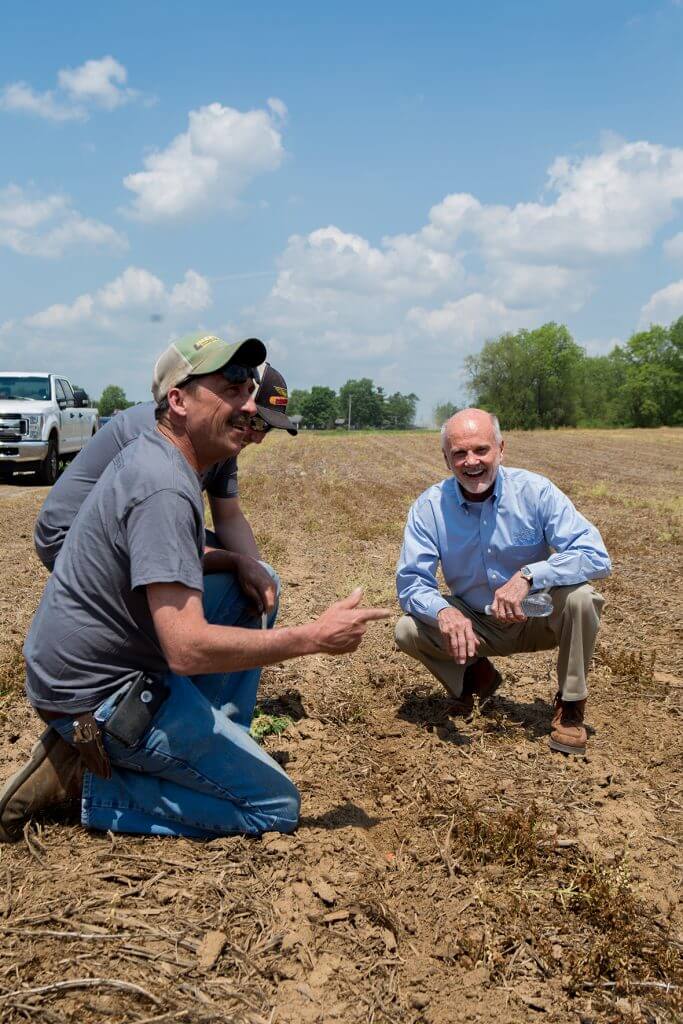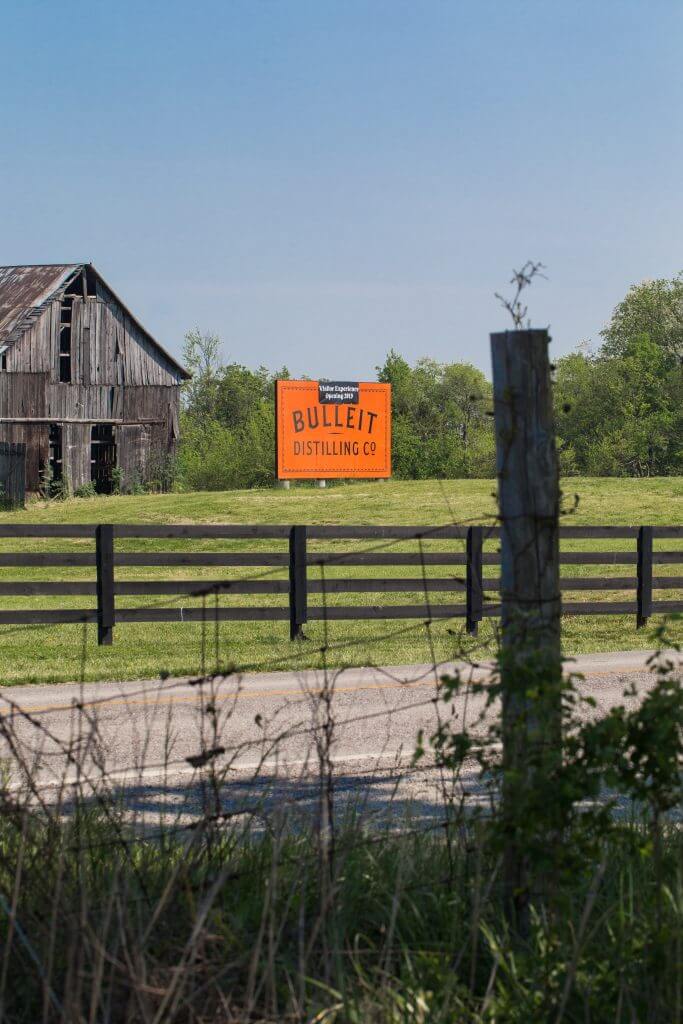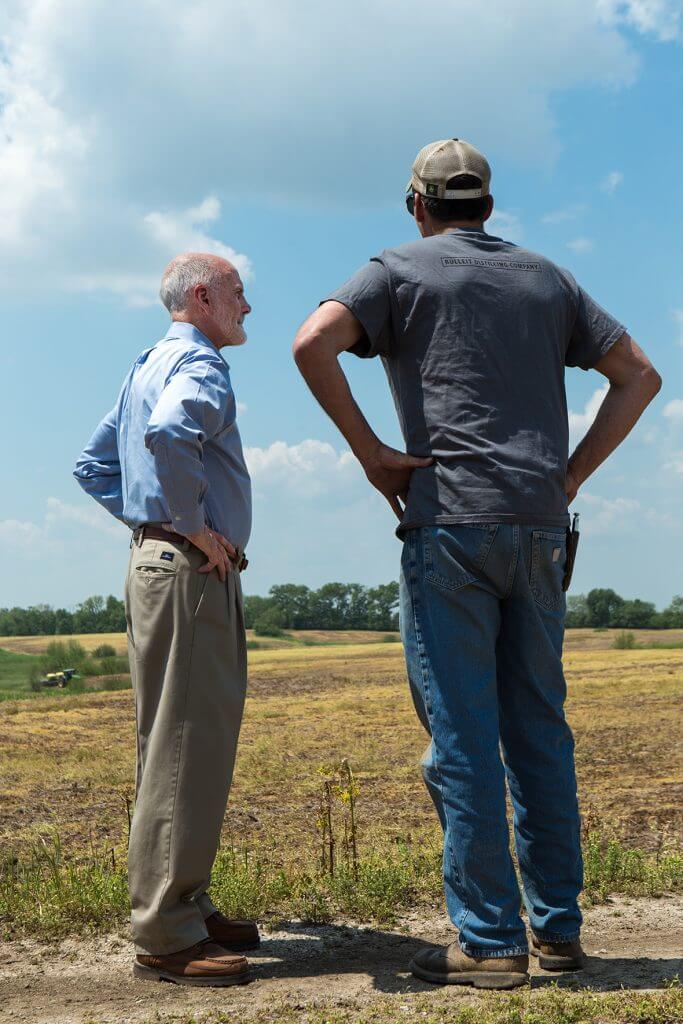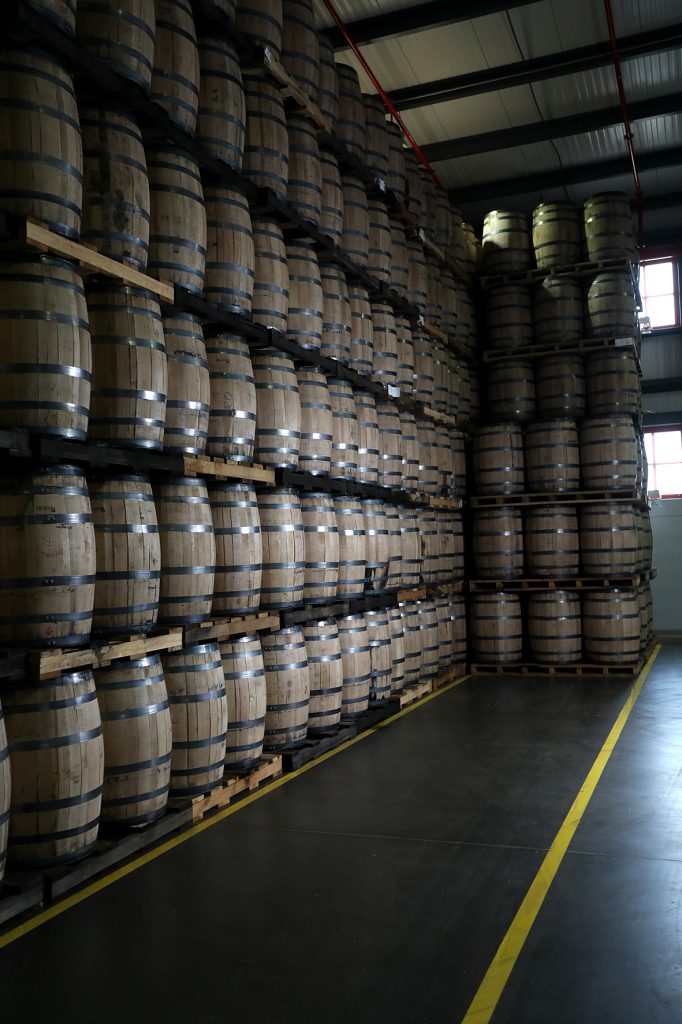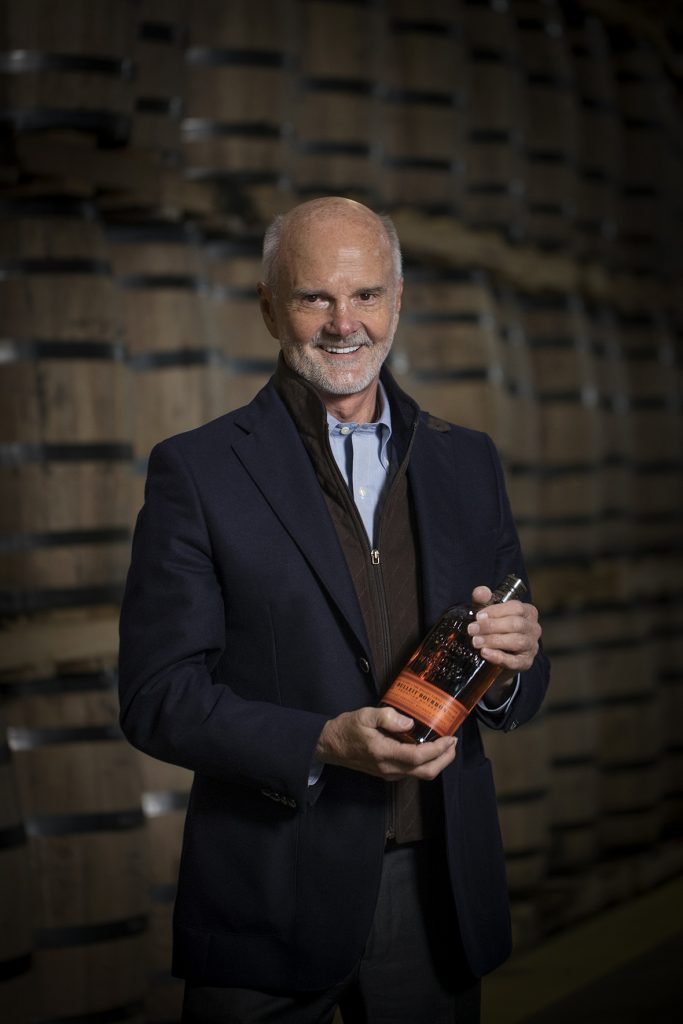
On a mild August day this summer, Tom Bulleit, a native of Kentucky and founder of that eponymous brand of bourbon, and Charlie Merinoff—a native New Yorker, chairman of Breakthru Beverage (the nation’s second-largest liquor wholesaler) and chair of Edible’s own advisory board—and I walked into the Mandarin Oriental’s bar overlooking Columbus Circle.
In a lively conversation that attracted the attention of pretty much every table in the spacious room, Tom and Charlie—titans of the alcohol industry—never had a silent moment between them. Tom joked that you need to pay attention because “Charlie has four great ideas a minute.” They discussed the merits of legal, regulated cannabis (perhaps surprisingly), why all spirits must be “ag forward,” the challenges of scaling, and Bulleit’s new distillery in Shelbyville, Kentucky, that’s surrounded by the corn and grain fields that go into each bottle of booze.
The following has been edited for clarity and brevity.

Authenticity and Scaling
Edible Manhattan: Charlie, you’ve been thinking a lot about the future of distilling in New York and the Northeast and how its relative newness is both challenge and opportunity. What advice do you want to ask of this Kentucky distiller?
Charlie Merinoff: Well, New York is a different state than, say, Kentucky, we don’t have as much of a recent history. I mean, our industry, our spirit’s industry is tiny compared to Kentucky’s, isn’t it?
Tom Bulleit: Yeah but I think there’s a huge opportunity [in New York]. Kentucky, for 150 years, has lived with the distilling industry, the whole body of law, regulation, taxation has built up around it. And everything that happens is natural, and that makes our rules great. In contrast, there are things you can use to color Scotch: caramel coloring, artificial smoke. Not with Kentucky bourbon. All of the color for the straight bourbons comes from the barrel, or it doesn’t come from anything. You can’t have a straight bourbon and do anything to it. So you see and can’t color it.
CM: The whole trend is for local and, you know, the local farmer, the local businessman, the small business. Tom has created a real person behind the brand. These are real people, and I think for this generation who really wants that authenticity, that the fact that it might be owned by a big company is less important than people think.

EM: And can you maintain this feeling of authenticity as a distillery or winery or brewery grows? That’s got to have been a challenge for Bulleit over the last 30 years.
CM: Consider Apple. Apple is a big company, there are lots of big companies that are connecting with this next generation. But you have to do it by being authentic, and this brand’s authentic, because of Tom. Tom really—and I give credit to Tito’s, although that’s an industrial vodka—he rectifies, buys like everyone else, but there is a real individual, who puts his heart, his family, everything into this brand. It really comes through.
TB: So, we were talking about craft versus craft at scale. And as Bulleit has grown, we remain a cult brand with the bartenders and the young trade and at the wonderful bars of Manhattan and Queens and Brooklyn. This has been our brand, grown by ambassadorship and word of mouth. We were talking about brands as they reach scale. Millennials like certain brands that they not only like, they hold in great esteem. And to the extent that we can maintain that climate of transparency, we’re family, like a family company. It’s huge—the family branding there. So I think that’s a big part of who we are, and who we will be.
Growing “Ag Forward”
EM: How do you stay ahead of the curve? How do you prepare for the next generation of drinkers?
TB: One of the things we’ve emphasized, and we really want to build on, is being agriculture forward or “ag forward.” Another is sustainability. Another is environmental responsibility. And energy conservation. And Charlie added, the local connection. Local involvement. Great local involvement. These ideas of community all went into the planning of our new Shelbyville, Kentucky, distillery.
CM: Yes. That the local brand, as they get big—and now you’re in Memphis, Tennessee, and there’s some cool local distiller there,
how do you compete against that? By being involved in their community. By giving—by taking a piece of the profits from that community and reinvesting it back.

EM: Can you define “ag forward,” what you mean by that?
TB: Well, at the new distillery in Shelbyville what we were doing is going from seed to grass. Non-GMO seed, special kind of seed, we have 300 acres there, we own 350 acres back here, we own a thousand acres across the street, and then right in that immediate area farmers will grow the grain for us. They grow our grain, they grow our seed, they grow our non-GMO grain. The wisdom is now that you rotate the wheat and other grains with soy beans. There’s a whole methodology of doing that with energy efficiency. With environmental responsibility. You don’t want erosion, you know, et cetera, et cetera. You don’t wanna use a lot of chemicals.
And so you start literally with that agricultural proposition. Straight bourbon whiskey is administered by the United States Department of Agriculture, it is in fact an agricultural product just like how your daughter is creating agricultural products. So I think we want to talk about that and bring it forward into sustainability: how we do that efficiently, with environmental responsibility, pulling back all of these things and superimposing but really talking about agriculture. These are agricultural products. The yeast grows by itself. Every element of it is an agricultural occurrence or natural chemical occurrence.
CM: I was talking to someone else in the whiskey business who was talking about doing an estate whiskey, and talking about the merits of an estate whiskey versus buying grains from other people, and I said, “It’s interesting, in the wine business, estate is better than buying from growers, ’cause they come from your estate,” but I could make an argument for this next generation, helping your local farmers, helping the local economy. When you go out into the community and you buy from a bunch of local farmers, now you’re helping the entire community. So I think there is as powerful of a story—in terms of working with lots of small farmers, or bigger farmers, even big farmers—on sourcing for spirits.
TB: And that’s what we are doing there in Shelbyville. These are people, as a matter of fact, that grow—one of them is the state senator of Shelby County. We would never actually do the farming and it would always be done by the local farmers. Sometimes it’s their land, sometimes it’s our land, either leased or owned. But it would be grown by the locals, and then first the locals would realize the benefit of that.
EM: Can you describe that landscape?
TB: I will send you some pictures. It’s 300 acres of rolling terrain surrounded by Guist Creek Lake, which is on also the reservoir system for Shelbyville. There’s fishing on the other side of the lake. It’s beautiful country. It’s the valley. Corn, soybean, some cattle. There is more cattle in the hollers and elevated areas. We source the grain, we source the water, we source everything for Bulleit from right there.

EM: It sounds like a nice community.
TB: I love that quote from fellow Kentuckian Wendell Berry. It says, “Treat your downstream neighbors as you would have your upstream neighbors treat you.” Remember your downstream neighbor, I love that.
Maintaining craft at scale
EM: When you talk about going from “craft” to “craft at scale,” what are the big considerations and challenges? Is it all about quality control? Is it about focus and simplicity? I mean, there are brands who, I’ll use the example of Rick’s Picks, a pickle brand in Brooklyn. It was at the beginning of the small pickle maker movement, which is now everywhere. He scaled up, but it wasn’t always easy. What were the things Bulleit had to do, to really make sure, “Okay, I’m proud of this, even as we scale up.”?
TB: Well, one of the things you want to do is make the same product. I think that’s absolutely crucial. Bulleit Bourbon is my great-great-grandfather’s recipe, two-thirds corn and one-third rye. As we make it today, it’s 68 percent corn, 4 percent malted barley, 28 percent rye. So about the same thing.
It was not very profitable, and my wife, who handled the finances, pointed that out. So I had to be very serious about what was going on. And in 1997 we partnered with Seagram’s. What you’re able to do at that point, and Seagram’s had a quality culture that was absolutely matchless, so we had an extraordinary quality culture helping us make more bottles and sell more bottles. And you obviously implement that, at the new distillery, with the same yeast strain, the same temperatures, the same type of distillery, the same type of equipment. At scale you have to maintain that consistency.
That’s how serious we are about consistency. Our chemist would tell us that that mingling process gives you the ability to create bottle to bottle, month to month, generation to generation, literally, consistency. We know the chemistry—the chemistry of the yeast strains are proprietary, we’ve got the same yeast. We know the grains, although grains are gonna…
EM: They’re gonna vary throughout the year?
TB: Of course, grains vary. Barrels vary. So what you’re going to have to do is pull that consistency. Consistency is huge. Consistency, scale… and scale kind of comes back to finance. The distillery. It’s a very expensive proposition to build a distillery.
EM: Thinking about little brands, and watching little brands over the last 30 years grow and come and go. Have there been situations where you say, “Wow, I really like what that new distillery is doing. I want to…,” you know, that’s creative. And has there been any strategy of Bulleit buying small distilleries? I mean, what’s the sort of investment in innovation strategy from Bulleit’s perspective?
TB: I think flavored whiskies are a great opportunity for our industry. But that’s not really who we are. I think you’ll see the same creativity that you see in vodkas. There’ll be a great variety of them. As I said, we will stay with straight whiskies, of which we have four now.
Our partners in innovation and chemistry are the bartenders, the captains of the industry. Bartenders are the captains of the industry. In better stores, there will be a whiskey specialist to help you find what you are looking for, what you might like that you don’t know yet. They have time to spend with you. A bartender here tonight may have to get 183 drinks in four hours. He doesn’t have time to say anything.
Growing up in the trade
EM: I know you were a lawyer for many years before you founded Bulleit. Did you grow up in the spirits trade?
TB: Oh I grew up working in the distilleries and our, my uncle was a master distiller. We’ve had a lot of relatives in the distilling business through the years. I’ve worked in the distilleries between school terms. So I know about it. But I’m not the chemist or engineer. I’m a business guy.
EM: Was that moonshine they were making?
TB: No. Almost all of the moonshine in America will come from the Appalachians. Appalachian mountain chain. And that’s going to be eastern Kentucky, Tennessee, Virginia, a little bit of West Virginia and Pennsylvania. That’s where all of the moonshine is made. I’ve never heard of moonshine being made out West, have you? I’m sure they do.
EM: I think they must have.
TB: Because, well, for instance in Kentucky in the year 1800 there were 2,000 stills in Kentucky. It was a function of our growing society. If you grew grain you fed the kids, you fed the livestock, and you made whiskey.
EM: It was like apples in New York, a little bit.
CM: Yep. Same thing.
TB: Same thing with apples in New York, and I’m sure that carried, it’s true of farming cultures, of pioneer farming cultures everywhere.
On cannabis
EM: Speaking of Kentucky, that state has been ahead of the curve on growing hemp and legalizing hemp and cannabis. Do you see that figuring into the ag landscape around you?
TB: Industrial hemp is a great plant and we know it grows well in Kentucky. I think we will see it evolve. And eventually growing some marijuana plants in your backyard for your own use will be no big deal.
CM: I will make a prediction… I will say Vermont will have the highest per capita consumption of marijuana and the single lowest tax collection because no self-respecting Vermonter will ever buy it in a store, they will grow it themselves.
Looking forward by looking back
CM: How big do—in your wildest imagination, when you were really, when you just started out, in the first five to 10 years, what did you think in your wildest imagination success would look like. Did you ever dream it would get to this size?
TB: What is so interesting, and I bet you we agree on this, you hope that your business will be a success and you don’t know exactly what that looks like, and I think when you’re young, you think, boy if I had an airplane, boy would that be great, or and you think, well maybe a big boat. And then as you get a little older, those things are just a pain in the butt. It’s an expensive pain in the butt.
 I remember when we got together at Seagram’s and I walked out of the Seagram’s Building, which is right fancy, we all may have noticed. It’s a journey and I think it becomes just more surreal. I don’t know that it’s like slamming the football down and touchdown, it’s just not there. When I wrote the business plan, 31 years ago, I thought that—and I still think today, that the international market would be eventually larger than a domestic market, the scale, if nothing else.
I remember when we got together at Seagram’s and I walked out of the Seagram’s Building, which is right fancy, we all may have noticed. It’s a journey and I think it becomes just more surreal. I don’t know that it’s like slamming the football down and touchdown, it’s just not there. When I wrote the business plan, 31 years ago, I thought that—and I still think today, that the international market would be eventually larger than a domestic market, the scale, if nothing else.
And, and, so American whiskeys are really—Scotches. People know Scotches and they identify whiskey with Scotch international and they’re learning about bourbons, so while whiskey and Scotch are huge in India, bourbon is just beginning. You kind of have to explain to them almost what it is. Same thing in China. Europe we do better.
They know Beam’s been there, Jack’s been there a long time, Maker’s has credibility. I think Bulleit is the largest premium bourbon in Europe.
Jack is completely the juggernaut. It is a completely different product.
CM: It is the single most ubiquitous item, I think, In the world. I used to think Johnny Walker, but today, I think Jack Daniel’s is the most ubiquitous spirit in the world.
TB: I bet you’re right.
EM: Has it gotten easier over the years?
TB: Perhaps some things. Walking into a room of New York City bartenders and giving a speech is still something that scares me. It’s gotten easier with practice. But I’m not sure the big operation has gotten any easier. To make a good barrel of whiskey is a damn trick.
Photos courtesy of Bulleit Bourbon and Brian Halweil.





